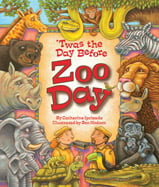Alignment to Standards for GA

| Grade | Number | Standard |
|---|---|---|
| 1 | S1CS3. | Students will use tools and instruments for observing, measuring, and manipulating objects in scientific activities. |
| 1 | S1CS4. c | Compare very different sizes, weights, ages (baby/adult), and speeds (fast/slow) of both human made and natural things. |
| 1 | S1CS5. a | Describe and compare things in terms of number, shape, texture, size, weight, color, and motion. |
| 1 | S1L1. d. | Compare and describe various animalsãappearance, motion, growth, basic needs. |
| 2 | S2CS3. | Students will use tools and instruments for observing, measuring, and manipulating objects in scientific activities. |
| 2 | S2CS4.d. | Compare very different sizes, weights, ages (baby/adult), and speeds (fast/slow) of both human made and natural things. |
| 2 | S2CS5. a. | Describe and compare things in terms of number, shape, texture, size, weight, color, and motion. |
| 3 | S3CS3. | Students will use tools and instruments for observing, measuring, and manipulating objects in scientific activities |
| 3 | S3CS4. b. | Use geometric figures, number sequences, graphs, diagrams, sketches, number lines, maps, and stories to represent corresponding features of objects, events, and processes in the real world. |
| 4 | S4CS4. b. | Use geometric figures, number sequences, graphs, diagrams, sketches, number lines, maps, and stories to represent corresponding features of objects, events, and processes in the real world. |
| 4 | S4L1. | Students will describe the roles of organisms and the flow of energy within an ecosystem. |
| 4 | S4L1. a. | Identify the roles of producers, consumers, and decomposers in a community. |
| 4 | S4L2. | identify factors that affect the survival or extinction of organisms such as adaptation, variation of behaviors (hibernation), and external features (camouflage and protection). |
| 4 | S4L2. a. | Identify external features of organisms that allow them to survive or reproduce better than organisms that do not have these features (for example: camouflage, use of hibernation, protection, etc.). |
| 5 | S5CS4. b. | Use geometric figures, number sequences, graphs, diagrams, sketches, number lines, maps, and stories to represent corresponding features of objects, events, and processes in the real world. Identify ways in which the representations do not match their ori |
| 5 | S5L1. | classify organisms into groups and relate how they determined the groups with how and why scientists use classification. |
| 5 | S5L1. a. | Demonstrate how animals are sorted into groups (vertebrate and invertebrate) and how vertebrates are sorted into groups (fish, amphibian, reptile, bird, and mammal). |
| 5 | S5L2. | Students will recognize that offspring can resemble parents in inherited traits and learned behaviors. |
| 5 | S5L2. a. | Compare and contrast the characteristics of learned behaviors and of inherited traits. |
| K | SKCS3. | Students will use tools and instruments for observing, measuring, and manipulating objects in scientific activities. |
| K | SKCS4.c | Compare very different sizes (large/small), ages (parent/baby), speeds (fast/slow), and weights (heavy/light) of both manmade and natural things. |
| K | SKCS5.A | Describe and compare things in terms of number, shape, texture, size, weight, color, and motion. |
| K | SKL1. b | Group animals according to their observable features such as appearance, size, motion, where it lives, etc. (Example: A green frog has four legs and hops. A rabbit also hops.) |
| K | SKL2. | Students will compare the similarities and differences in groups of organisms. |
| K | SKL2. a | Explain the similarities and differences in animals. (color, size, appearance, etc.) |